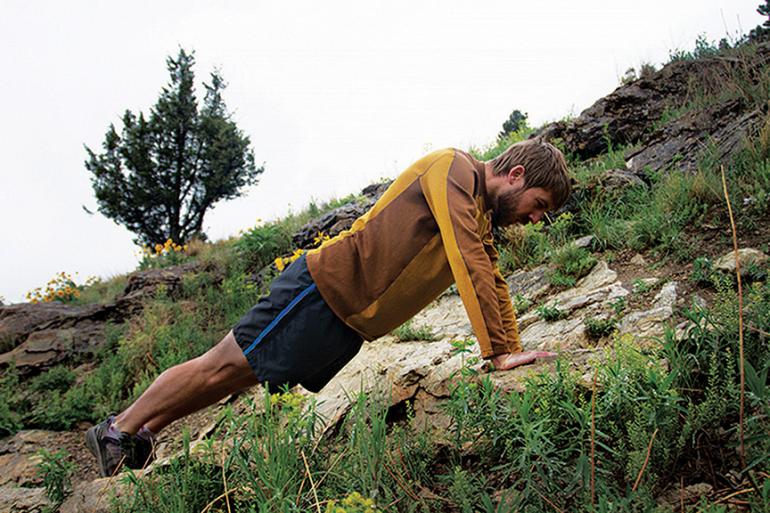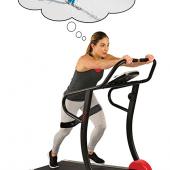Cross Over
Adjusting your workout routine.
For some, getting outside can make the difference in a successful exercise program, versus fading into the monotony of a gym routine. This is, in part, why programs like CrossFit have been so successful—they prepare you for all types of activities and are almost never repetitive. As a CrossFit gym owner, I can tell you that you can’t reproduce the environment found in our gym, but you can do CrossFit-style workouts outside, and get some of the best of both worlds. I’m not going to give you a list of workouts to do—those are everywhere online for free. It’s fairly obvious that you can use hills, rocks, benches, and other objects to provide diversity in your training. Instead, here are a few simple rules to get you started on changing up your fitness routine, using some of the best methods I’ve learned from CrossFit.
Find a Training Partner
Ask anyone involved with CrossFit, and they might tell you about the workouts, the skills, the coaches at their gym, or how hard the WOD (Workout Of the Day) was on Saturday. These things will vary from place to place, but one thing that will not is the community. CrossFit, at its very core, is about community—those who push you and support you, who keep you accountable and build camaraderie, are the real reason your neighbor won’t shut up about CrossFit. Finding yourself a training partner won’t be the same as having a group and a coach to train with, but it will bring a new level of enjoyment to your training and will help push you toward your goals. The 6am workout group at my gym is a pretty regular bunch, and they know if they hit the snooze button instead of coming into the gym, they’ll hear about it from their buddies. Switch it up and try an outdoor partner workout like this:
Partner 1: 200m sprint + 20 alternating lunges + 10 burpees
Partner 2: Rest while Partner 1 works
Switch, then continue until each partner completes 3-5 rounds
Do Things You Don’t Want to Do
After about a decade in the fitness industry, I believe you’ll make the most progress by working on your weaknesses. This is difficult to do on your own, because it requires true honesty and self-criticism. Give CrossFit a week, and it will probably expose a slew of weaknesses in even the most gifted athletes. By taking an honest look at your fitness and deciding to work on what you’re not good at, I can promise you’ll make faster progress than by simply working on your strengths. Let’s say you can run like the wind, but upper body strength is not your forte—something as easy as splitting up your runs or interval workouts with 60-second sets of pushups might be enough to incite big change. Balancing your training across the board with strength, flexibility, and cardiovascular work can also be essential in preventing injury.
Repeat Training and Time Yourself—Sometimes
Think of the stopwatch as a tool: useful in many situations but not always right for the job. Measuring and testing yourself against the clock is a great way to find out how you’re doing, but stressing about the clock every time you train isn’t a good idea either. Instead, choose a route you can run or bike, throw a few stations of exercises in along the way, and repeat that course. Time yourself to see if your training is working and if you’re getting fitter. One of my favorite summer workouts is running to the lookout at Sypes Canyon. Let’s say the first time I run it, it takes me 30 minutes. The next time I come out, I’ll set my watch for 30 minutes and see if I can make it further up the trail. If the time stays the same and I keep covering more ground, I know I’m getting stronger.
John Murie owns Altitude Athletics in Bozeman.











